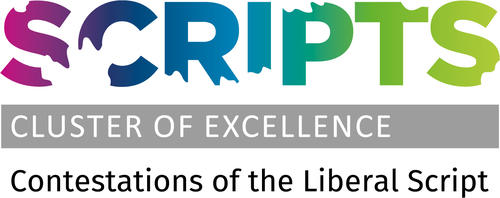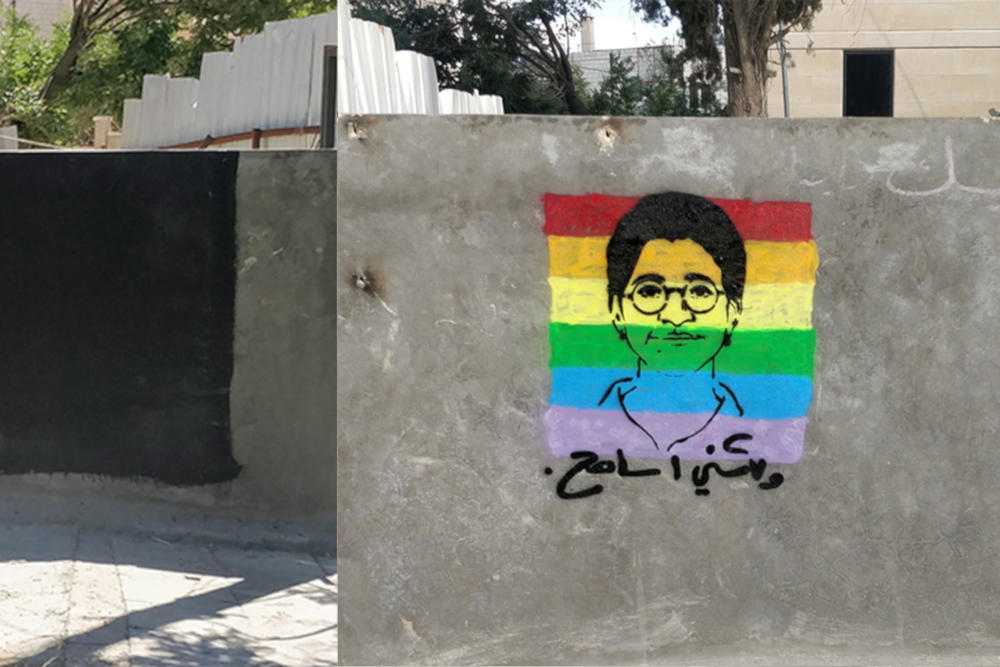Covid-19 and the Female Body: Egypt's Response
by Shereen Abouelnaga
№ 14/2020 from Aug 04, 2020
The death of an Egyptian LGBTQI activist sparked a strong response, with one camp seeking a link between immorality and homosexuality and the other promoting social equality of all bodies since Covid-19 does not discriminate.
Amman Sarah Hegazi mural before and after blackout paint
Image Credit: Flycatchr (Wikimedia)
As women take up more burdens and multiple tasks during the Covid-19 lockdown, the mood in Egypt has become deeply distressing.
The work that women have to face during the pandemic has multiplied. Apart from looking after children and elderly parents there are many other tasks women are responsible for, in addition to their own paid jobs.
News about the universal rise of domestic violence against women have spread. When it is coupled with austerity measures imposed by the government the situation becomes explosive.
To reduce the repercussions of Covid-19, Egypt's parliament passed a bill cutting one percent from employees’ salaries - which are already borderline - for twelve months starting July 1.
With such tight budgets, unfair division of gender roles, psychological distress in the private sphere and the rapid outbreak of coronavirus in the public sphere, several women decided to pay tribute to their bodies. The rigid physical lockdown generated its own safety valve. Voice. Voice with all its connotations. That is, while the lockdown has led to the disappearance of a special "public space" women have decided to reshape space - and certainly culture - through their voice that reclaims autonomy over the body.
On June 13, facebook followers received the news of Sara Hegazi’s death. Aged 30, she had committed suicide.
An LGBTQI activist and IT expert, Hegazi was arrested back in 2017, imprisoned and tortured after waving the rainbow flag in a musical concert. Released from prison in 2018, Hegazi sought asylum in Canada for fear of more prosecution.
Unable to deal with her post traumatic stress disorder, caused by physical torture and social vilification, Hegazi committed suicide. She had left a short handwritten note in which she admitted her inability to stick to her guns.
How this news was received is the crux of the matter when it comes to the treatment of different opinions, values and sexual orientations. The incident trended on social media. The voices of women (and men) were loud and assertive enough to be heard. That was quite a victory when one recalls the nature and ideology of the opposing voices.
The latter were fierce, ruthless and violent. They resorted to the classical use of a religious-threatening discourse. Sara was portrayed as a culprit, a sinful person, suffering from a severe disease, or an ‘abnormal’ person whose ‘homosexuality’ was the expected consequence of her secular liberalism. For all this, she does not deserve God’s mercy. Sometimes she was called an infidel, other times an atheist. The underlying feeling was schadenfreude.
On the other hand, the voice of Sara’s supporters was even louder. Immediately after her death was announced they changed their profile picture into the rainbow flag. They declared their position in the most direct phrasing. While celebrating Sara as an icon, they made a point of reclaiming the autonomy of the body and personal freedoms. Hence, gay rights.
The confrontation was tough because the struggle triggered a cruel recall of all the incidents of sexual violence. Sara’s death initiated a retaliatory path instead of a reconciliatory one. Her death sparked a strong aggressive struggle where one camp was trying to find a link between immorality and homosexuality, while the other camp was promoting social equality of all bodies since the virus itself does not discriminate between bodies.
It must be said that the tone of the opponents' discourse was accusative and judgemental. It derived its strength from intimidating and inhibiting Sara’s supporters by employing the lethal weapon: religion.
On the other hand, the tone of the supportive camp had a speculative element that tried to initiate a dialectic that might lead to an investigation of the meaning of corporeal autonomy and social equality. Put differently, Sara’s body became a discursive arena upon which several discourses (conservative right-wing as opposed to egalitarian liberal) were played out.
What is at stake here is that the regime, accompanied by systemic dynamics and strategies that help it maintain its power turned Sara into a homo sacer - one who may not be sacrificed, yet may be murdered with impunity.
The defence pursued by Sara’s supporters salvaged the (queer) female body from the toxic mix of social sadism and religious discourse. In short, the conflict was noticeably fiery and the supporters were adamant to take it to the end.
The situation became so acutely polarized to the extent that two days after Sara’s suicide, Al Azhar, an institution known for its conservatism, had to interfere and issue a fatwa that absolved Sara from the sin of infidelity; yet, it reiterated that it should be dealt with “as a mental illness that can be treated through specialists”.
As I see it, supporters, men and women, glued to their screens, locked down, incarcerated, were not only defending Sara or grieving over her death. They were also protecting their bodies from any possible violation or a state of precariousness that is likely to happen. Whether to protect the body from Covid-19 or the regime is the question.
Shereen Abouelnaga is Professor of English & Comparative Literature, Department of English Language & Literature, Faculty of Arts, Cairo University

